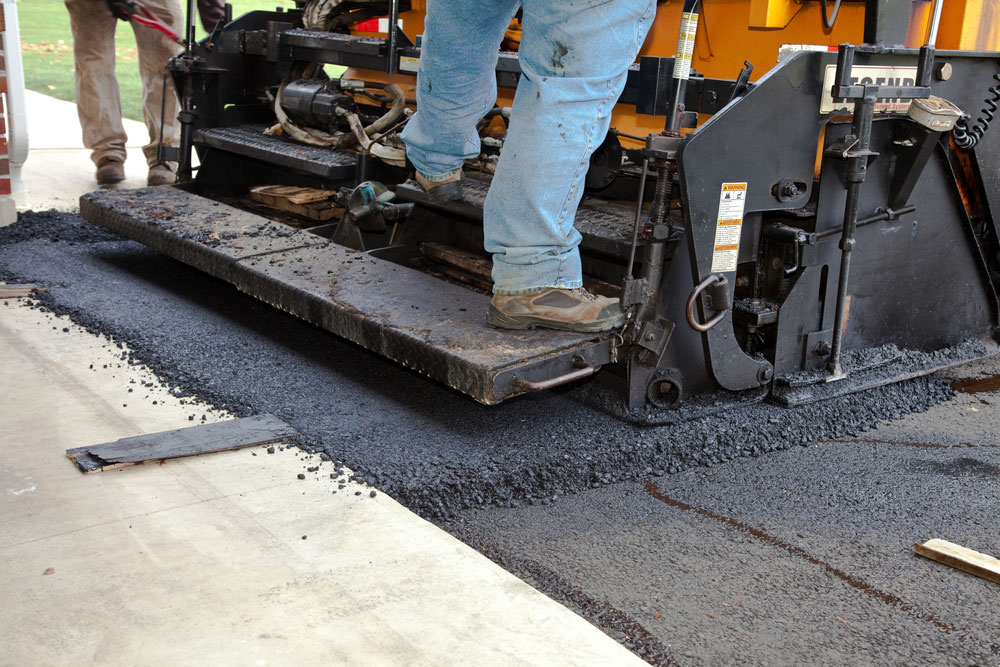When it comes to choosing the right crack-filling solution for your asphalt, it’s essential to start by assessing the severity of the cracks. You need to consider factors like traffic conditions and environmental influences, too.
Different filler types suit different situations, and using the wrong one can lead to further damage. Understanding these aspects can make all the difference in your asphalt’s longevity.
So, what’s the best approach for your specific needs?
Understanding Different Types of Crack Fillers
Choosing the right crack filler is essential for long-lasting asphalt repairs. The type you select should match the size of the crack, the level of traffic, and the local weather conditions.
Liquid Sealants for Minor Cracks
Liquid crack fillers are ideal for small surface-level cracks and are easy to apply with minimal equipment.
- Quick and convenient for DIY applications
- Flows easily into hairline or shallow cracks
- Best used in light-traffic areas or low-stress environments
Rubberized Crack Fillers for Flexibility
Rubberized fillers offer enhanced elasticity, making them suitable for medium to large cracks and areas prone to movement.
- Highly flexible to expand and contract with temperature changes
- Durable and long-lasting solution
- Good for residential driveways and moderate traffic zones
Hot-Pour vs. Cold-Pour Options
Your choice between hot-pour and cold-pour fillers depends on how demanding the environment is.
- Hot-pour fillers:
- Require heating before application
- Provide strong adhesion and durability
- Ideal for high-traffic roads and commercial areas
- Cold-pour fillers:
- Ready to use out of the container
- Easier to apply but less durable
- Best for smaller repairs in less demanding settings
Selecting the right crack filler based on crack size, climate, and traffic volume ensures a longer-lasting repair and protects your asphalt from further deterioration.
Assessing the Severity of Cracks
Before jumping into repairs, it’s important to assess how severe the cracks in your asphalt really are. This helps you choose the right method and materials for long-term results.
Visual Inspection of Crack Size
The width and appearance of the crack often indicate its seriousness.
- Hairline cracks: Typically surface-level and minor
- Cracks wider than ¼ inch: Indicate moderate to severe damage
- Multiple cracks in one area: May signal underlying structural issues
Depth and Surface Deterioration
Crack depth and additional surface damage help identify if your asphalt has structural problems.
- Shallow cracks: Can usually be treated with basic crack-filling
- Deep cracks: May reach the base layer and require more extensive repair
- Signs of potholes or crumbling: Suggest compromised pavement integrity
Choosing the Right Solution
Understanding the severity helps determine the right approach to maintenance or repair.
- Minor cracks: Use liquid sealant for quick fixes
- Moderate to deep cracks: Consider rubberized or hot-pour fillers
- Structural damage: May require patching or professional resurfacing
By evaluating the crack’s size, depth, and associated damage, you can make informed decisions to preserve your asphalt and avoid costly future repairs.
Application Techniques and Best Practices
Applying crack-filling solutions the right way is essential for a long-lasting and effective asphalt repair. Proper preparation and method ensure the filler bonds well and withstands traffic and weather conditions.
Step-by-Step Crack Preparation
Start with a clean surface to allow proper adhesion of the filler.
- Remove debris, dirt, and vegetation using a wire brush or high-pressure washer
- Let the area dry completely before applying any materials
- Inspect cracks for width and depth to select the appropriate filler
Choosing and Applying the Right Filler
Match the filler to the type and severity of the crack for best results.
- Use liquid sealants for hairline or shallow cracks
- Apply rubberized asphalt products for wider, deeper cracks
- Ensure the temperature is above 50°F for proper bonding
Filling and Finishing the Crack
Take care during the application to ensure a smooth, sealed finish.
- Apply the filler with a caulking gun or by pouring directly into the crack
- Slightly overfill the crack to allow for shrinkage
- Smooth the filler using a putty knife or trowel
- Allow full curing time as per the manufacturer’s instructions before using the surface
By following these best practices, you’ll achieve a durable, professional-quality repair that helps prolong the life and safety of your asphalt surface.
Choosing the right crack-filling solution and applying it correctly is key to preserving the integrity, appearance, and longevity of your asphalt surface. Understanding the type and severity of the damage, selecting the appropriate filler, and using the right techniques all contribute to effective, long-lasting repairs.
Taking a thoughtful and informed approach ensures your pavement remains safe, functional, and visually appealing for years to come.

